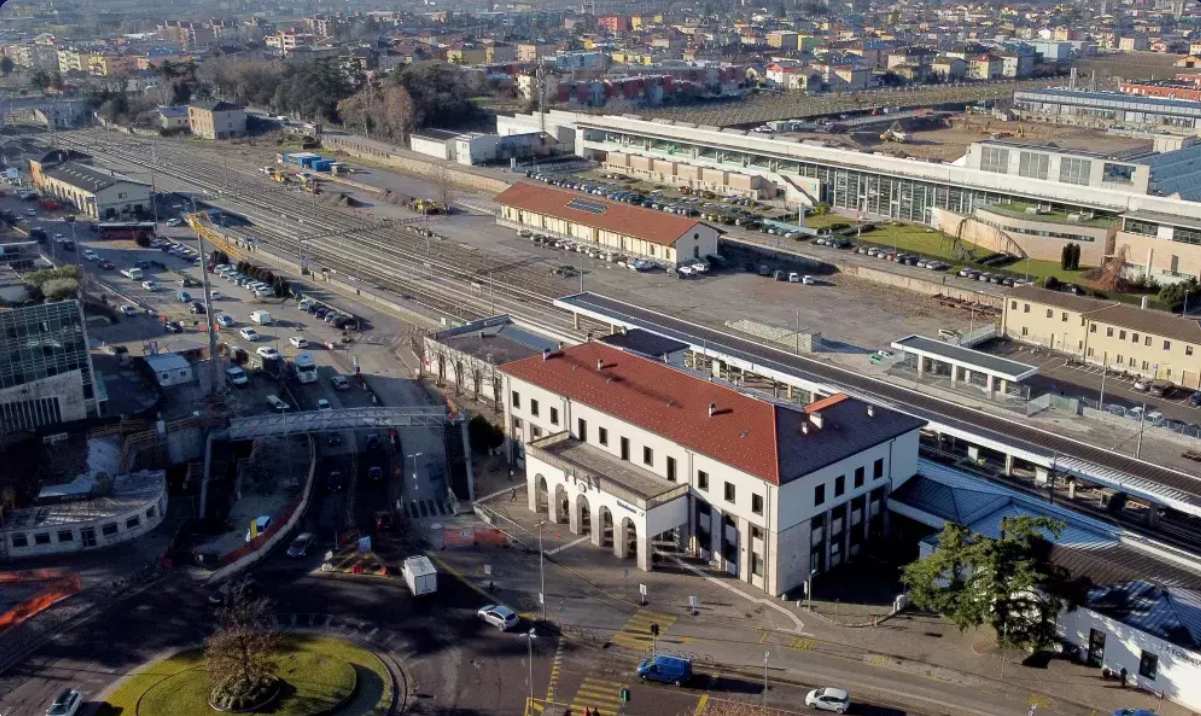A public library in the former passenger lounge of Quarona station, a community centre for the elderly at Gianturco station in Naples, a mycological club in the abandoned spaces of Ponte a Moriano station in Tuscany and a martial arts gym in the former station manager's house in Este, Padova. Italy is breathing new life into abandoned or underused spaces in railway stations.
The latest and most ambitious project is in Rovereto. According to an article published in Portico, a platform developed by the EUI, the Alpine town of Rovereto is transforming the empty main building of its railway station and the surrounding land into a public-civic hub for collaborative action on climate change, biodiversity and heritage regeneration. Inspired by the New European Bauhaus principles of beauty, sustainability and inclusivity, the project aims to restore the station's role as a centre for social cohesion and active community engagement.
The S4T (Station for Transformation) project, as it is known, was selected along with 13 others through a competitive evaluation process as part of the European Urban Initiative. It was funded with €4.9 million out of a total programme budget of €65 million.
Rovereto and its surroundings need to adapt quickly to the effects of climate change and mitigate the resulting loss of biodiversity, which is closely linked to the area's cultural heritage. In order to support the local community in facing these challenges, the local authorities, together with community members and non-governmental organisations, envisioned the transformation of the railway station from a transport hub to a multiplier and catalyst.
In this way, the historic importance of the station for local development and identity will be regenerated by transforming it into a trans-boundary cohesion hub that will include: a Biodiversity Kiosk; a Climate and Biodiversity Co-creation Space; a Climate Canteen; a Climate and Biodiversity Community Space; and an outreach vehicle 'S4T on Wheels'.
These spaces will serve as interactive venues for training, co-design, co-production and knowledge transfer. They will support promising public, civic and business initiatives related to climate change and biodiversity.
As a centrally located mobility hub for over 135,000 inhabitants, the station is an ideal public space for co-creation.
According to Gianni Petiti, project manager at Europe Consulting (one of S4T's partners) and co-author of the study on the transformation of railway stations published by RFI, "only recently have railway stations assumed a central role in urban life. They are now seen as part of the urban fabric, even if they were historically located on the periphery. Recent trends in urban development have gradually changed their role. Today, stations can provide the same functions that were previously associated with public spaces".
The small but international Rovereto railway station has been a transit point between Italy and Austria for more than a century. Its history is reflected in the different parts of the building, with the original nucleus built at the end of the 1800s by the Imperial Royal Austrian State Railways.
Although there was no standard design for railway stations in the Austrian Empire, Rovereto station was one of the first examples of a multifunctional building. The main building housed a hall and the ticket office on the ground floor, while on the upper floor there were small apartments for railway workers and the station manager.
Subsequent renovations, including the renovation of the façade in a rationalist style during the Fascist era and the reconstruction of bombed-out sections after the Second World War, have given the station its current appearance, which shows the different layers that this powerful example of industrial architecture has undergone.
Since the 1990s, the closure of a series of functions at the station has led to the gradual abandonment of many spaces, such as the workers' flats and the kiosk, which also contributed to the station's role as a public space, acting as a gateway to the city. These principles remain central to the transformation of the abandoned spaces into a centre for sustainability education.
According to Simone d'Antonio, author of the article for Portico, thanks to the central location of the station, just a 10-minute walk from the main square, Piazza Rosmini, the citizens' group La Foresta (The Forest), which is also one of S4T's partners, was already inspired in 2018 to reuse the abandoned spaces of the station.
In 2021, the collaboration between the company in charge of the management of the national railway infrastructure (RFI), the municipality and the network of local stakeholders active in sustainability organised under La Foresta, led to the creation of a mixed-use space, including a coworking area, a conference room and a community kitchen, in the previously unused service rooms adjacent to the station.
Inspired by the New European Bauhaus, the Station for Transformation project aims to build on these initiatives and transform Rovereto station for the benefit of the local community.
--
Photo source: EUI








